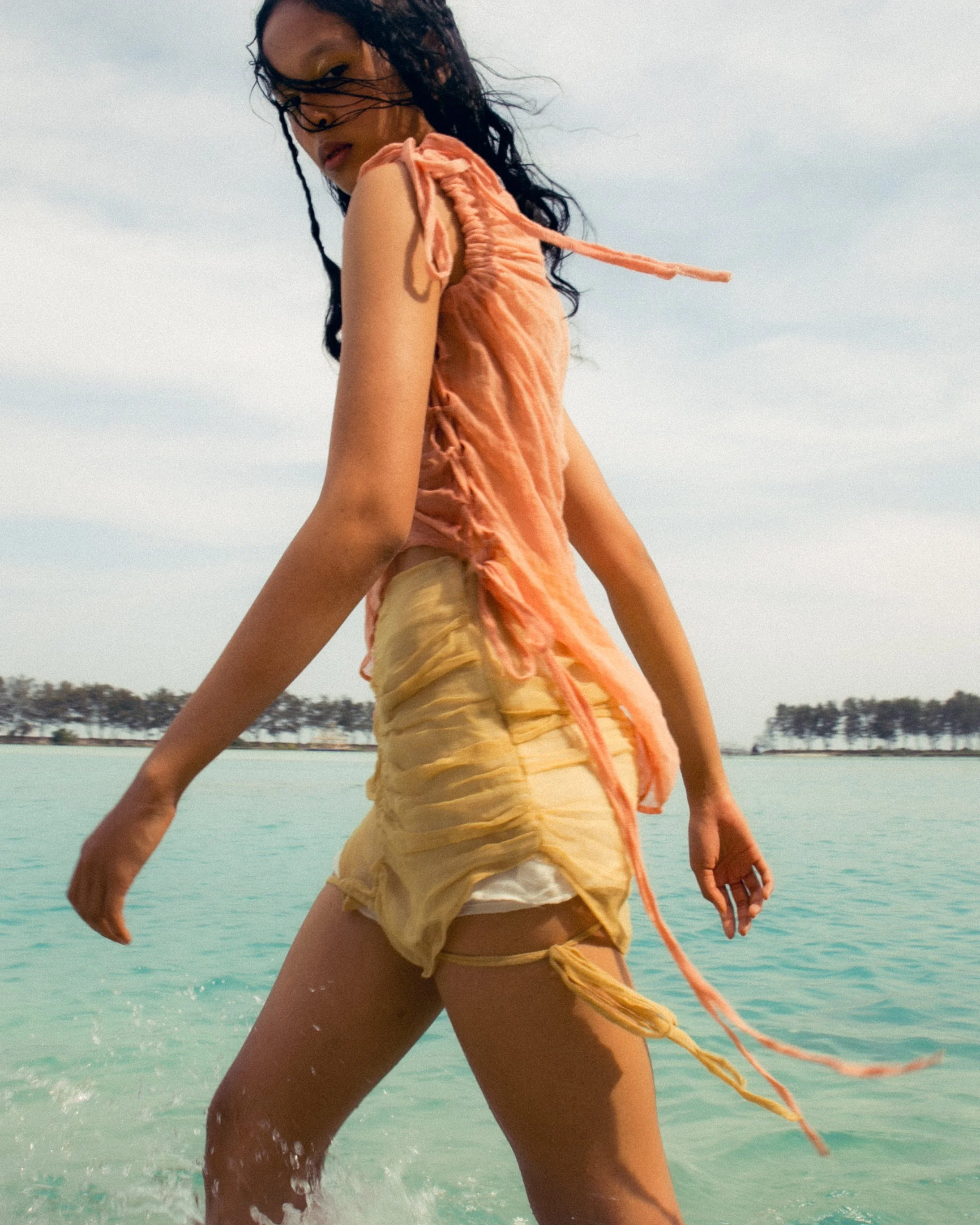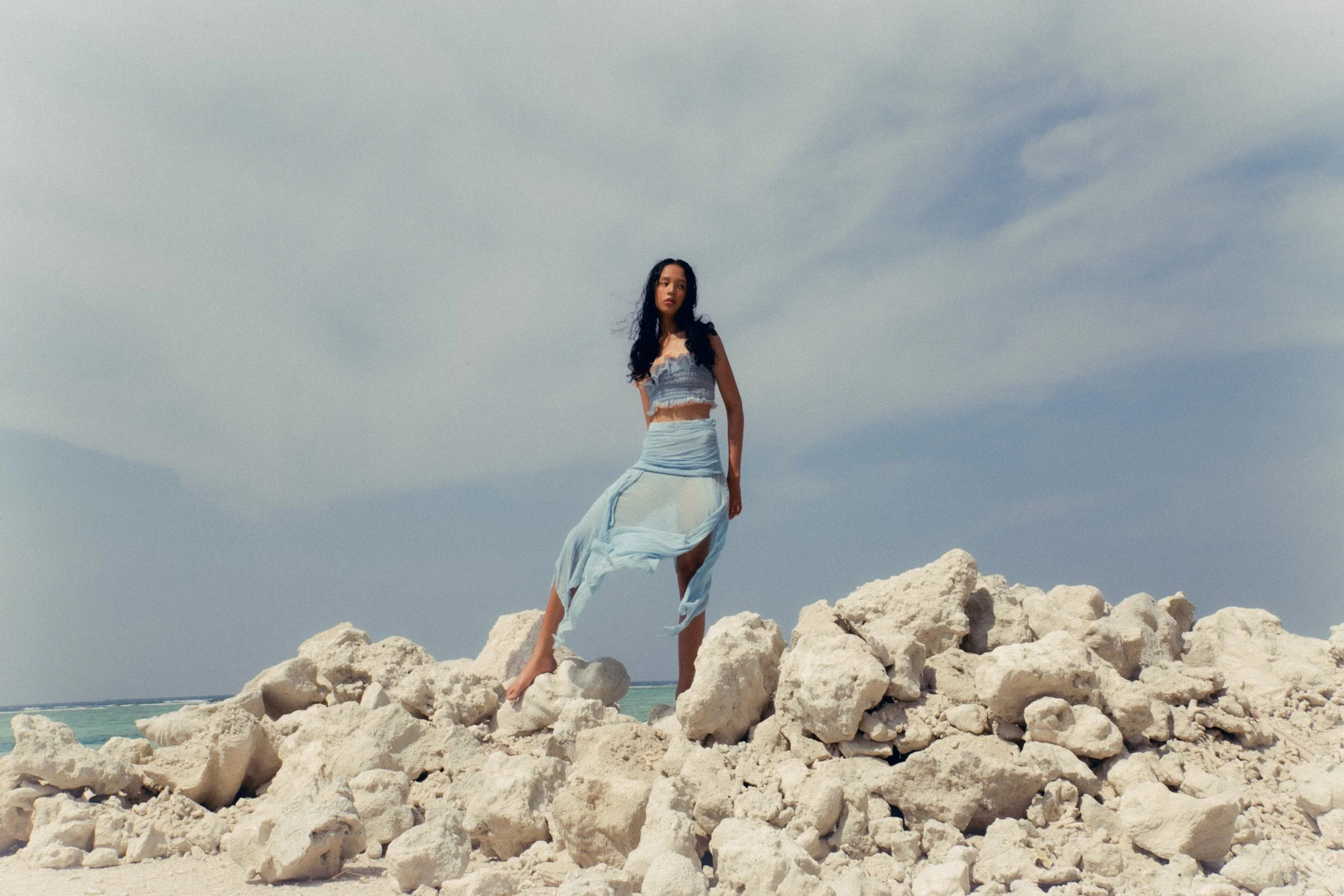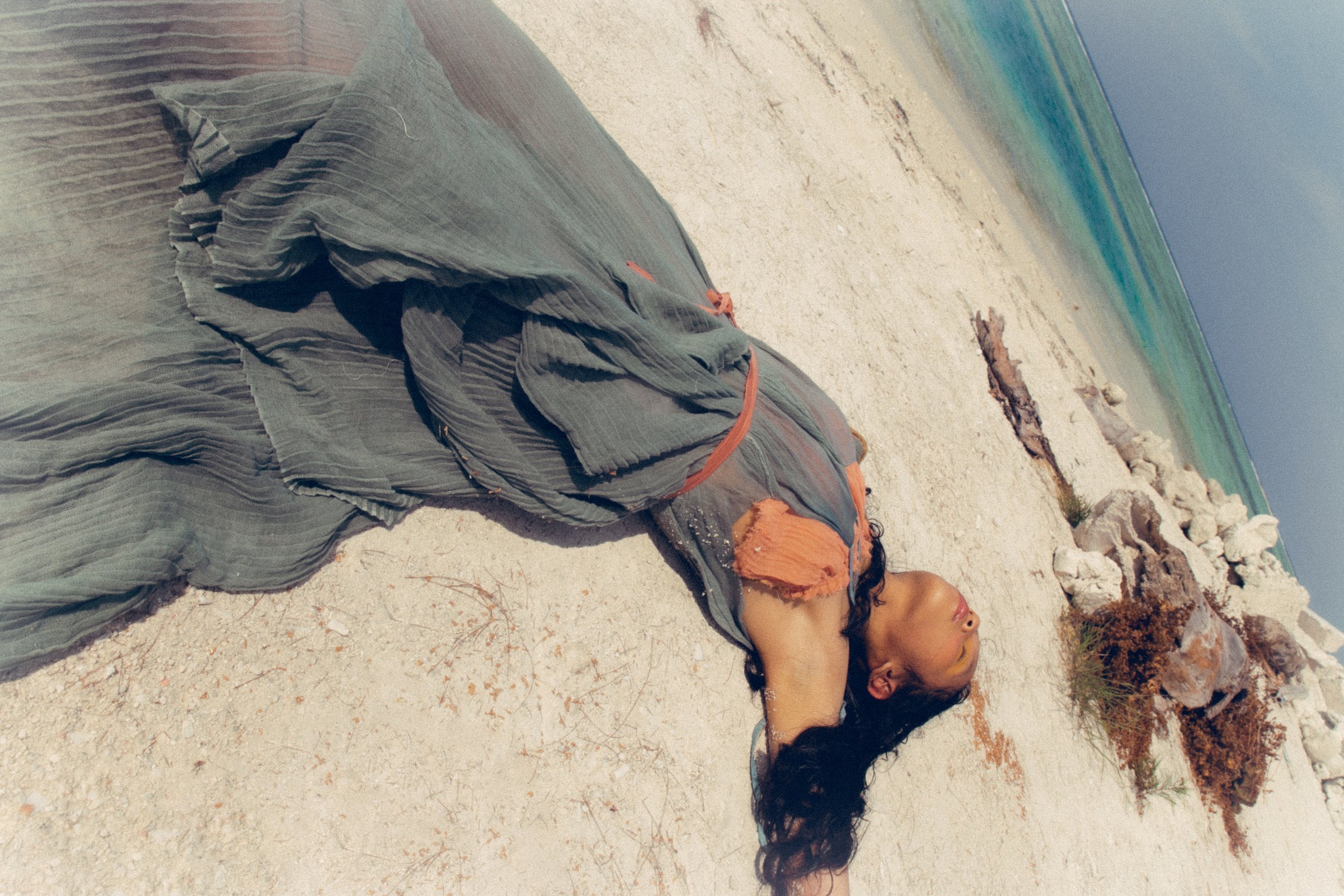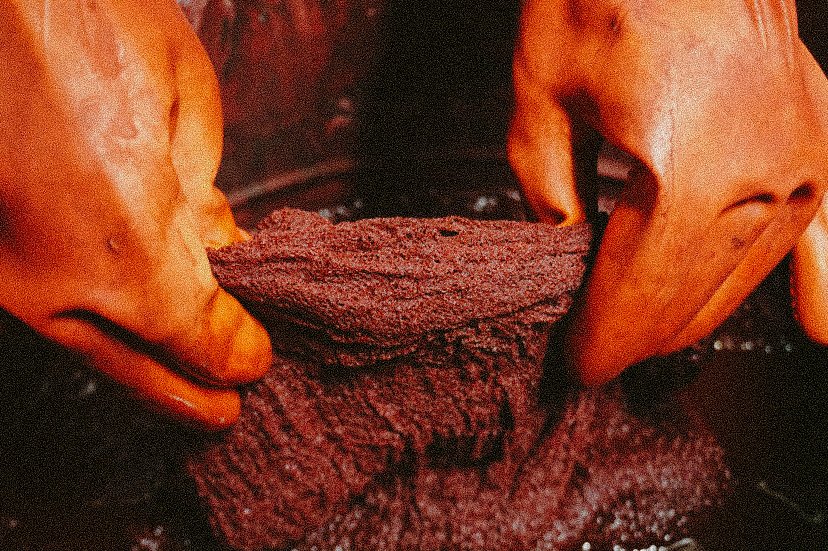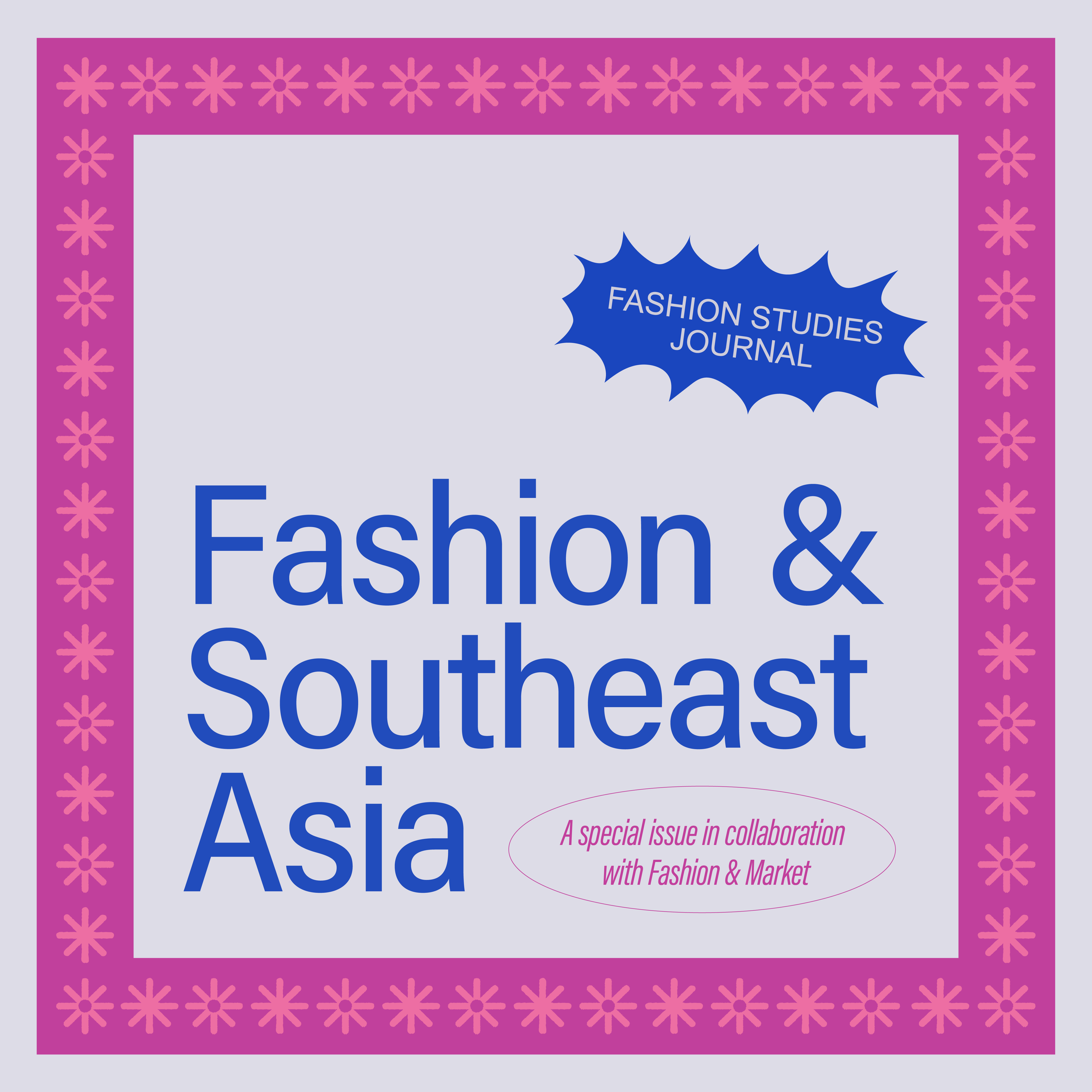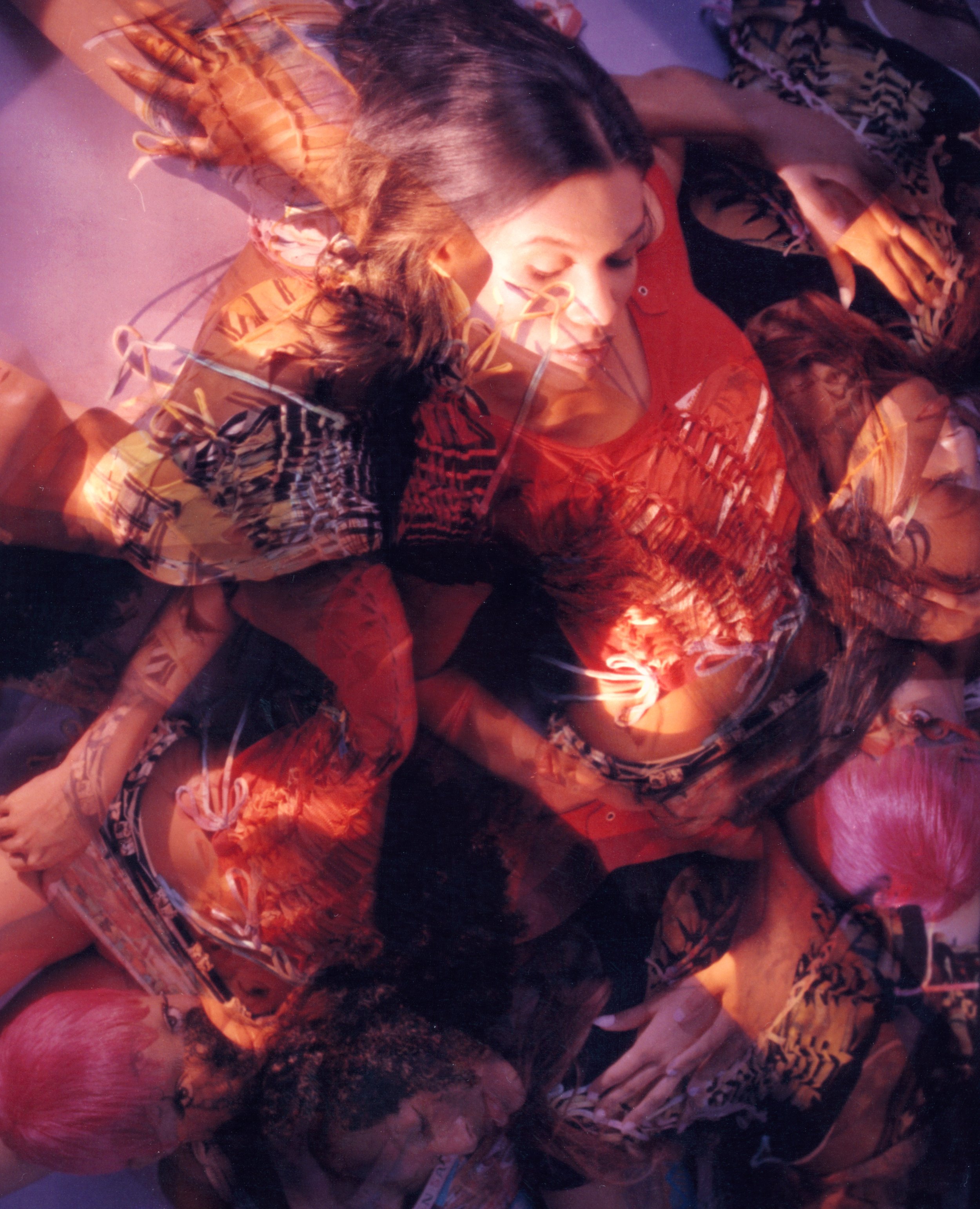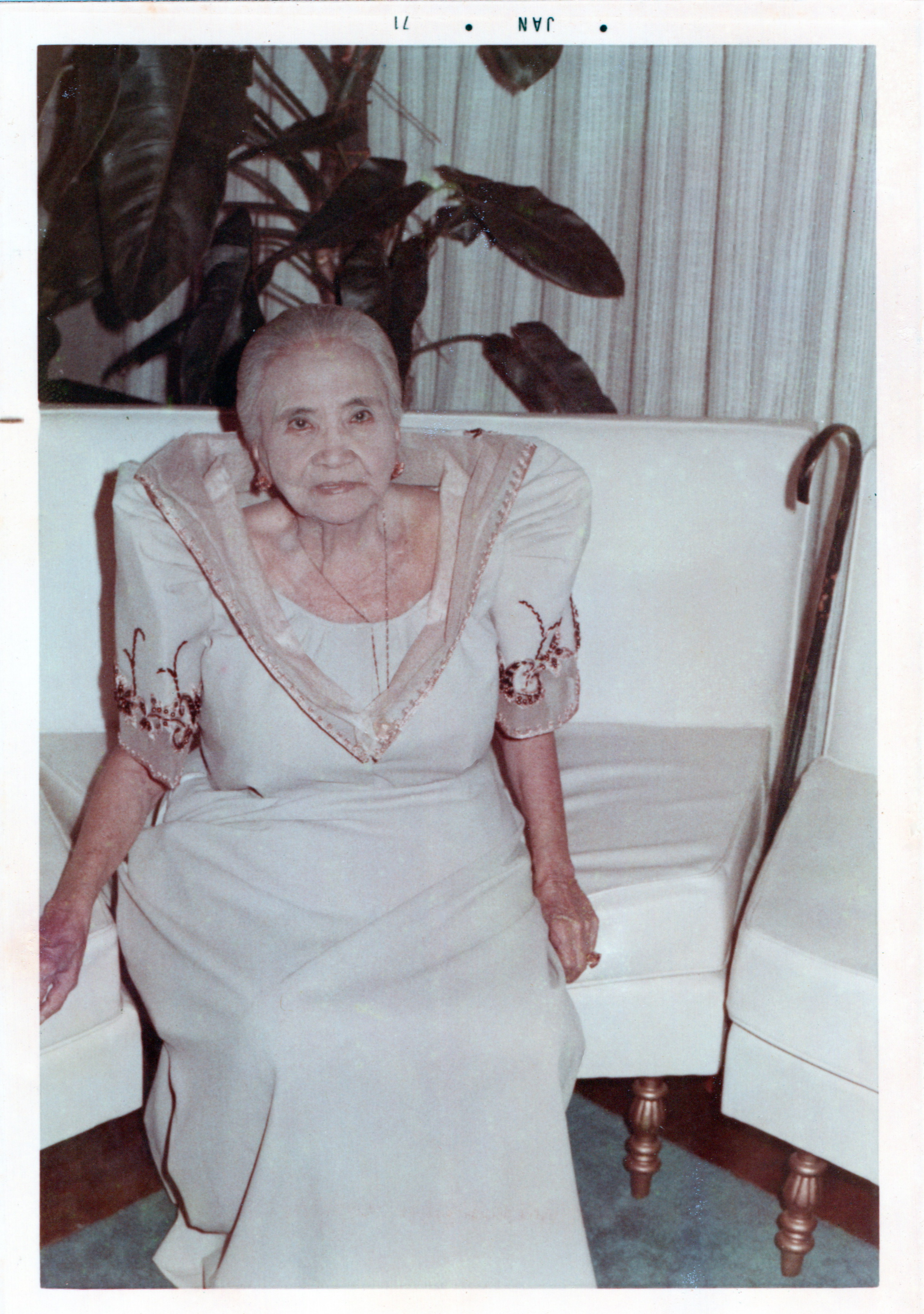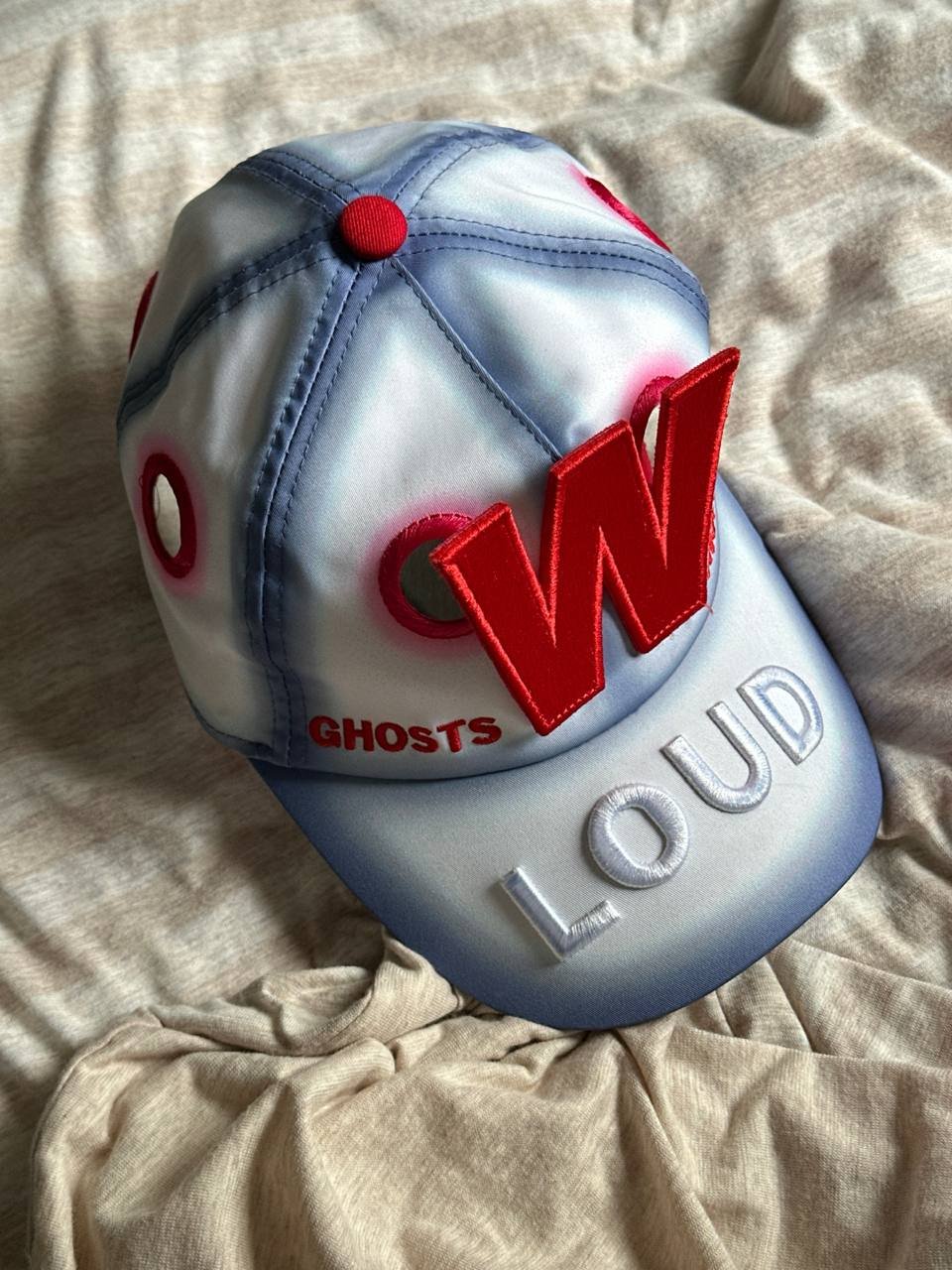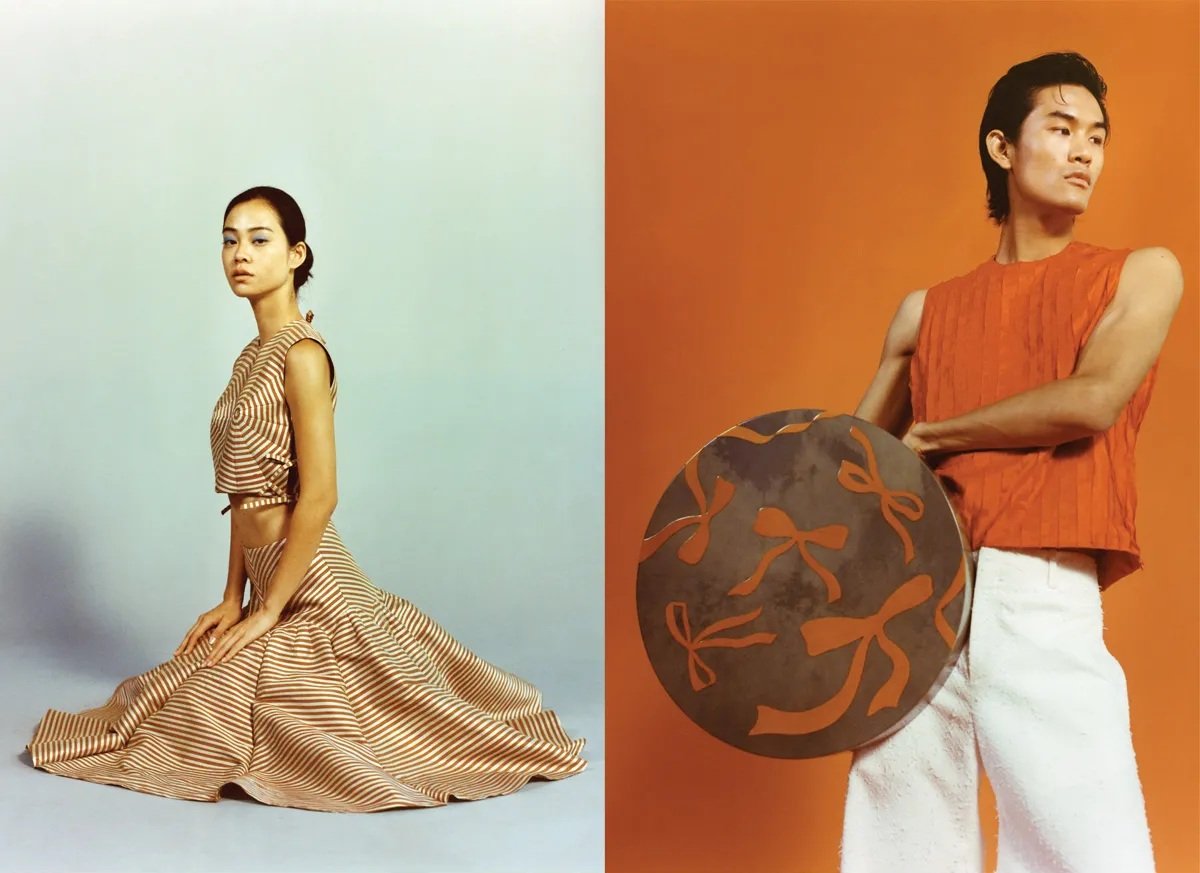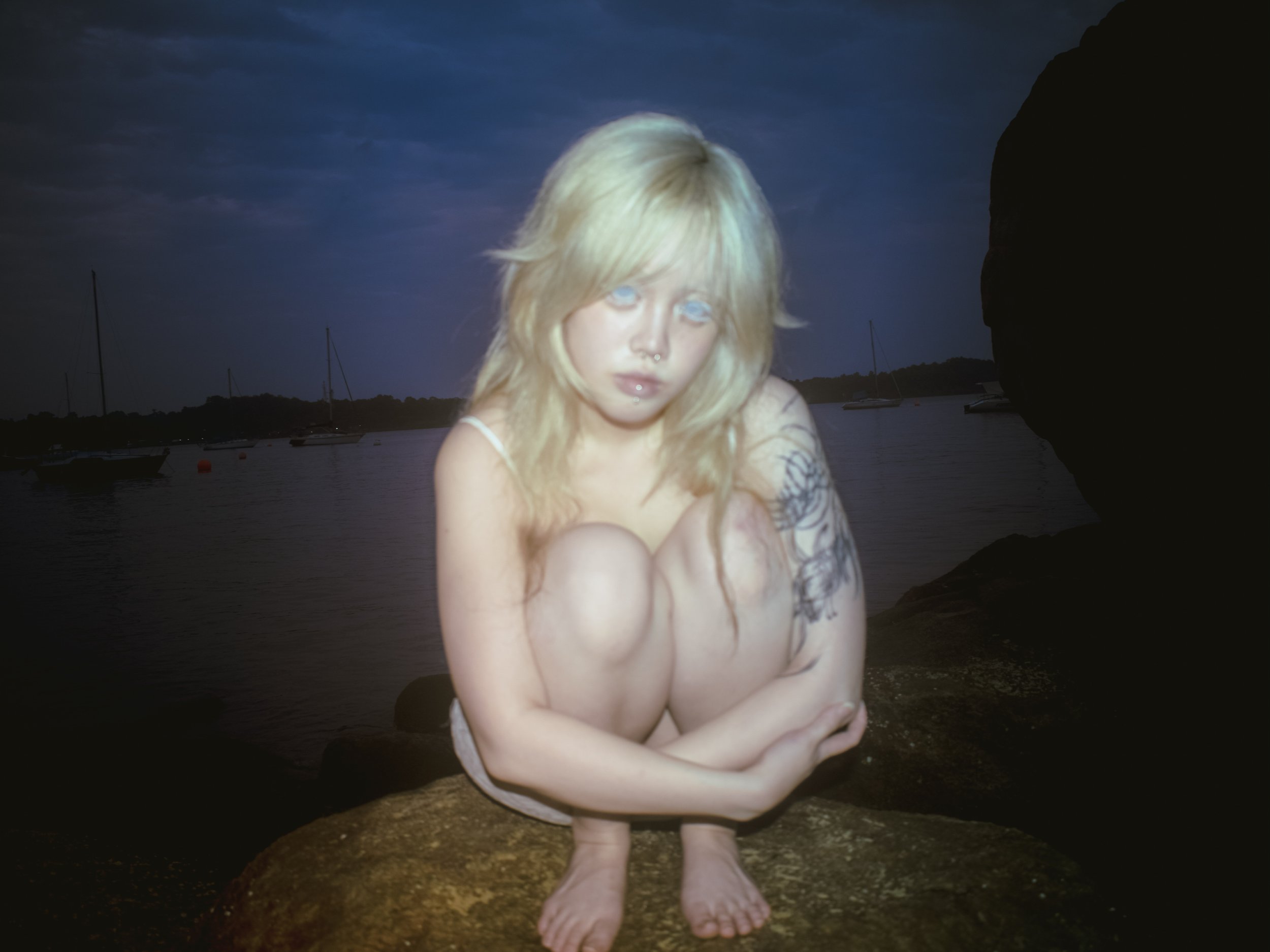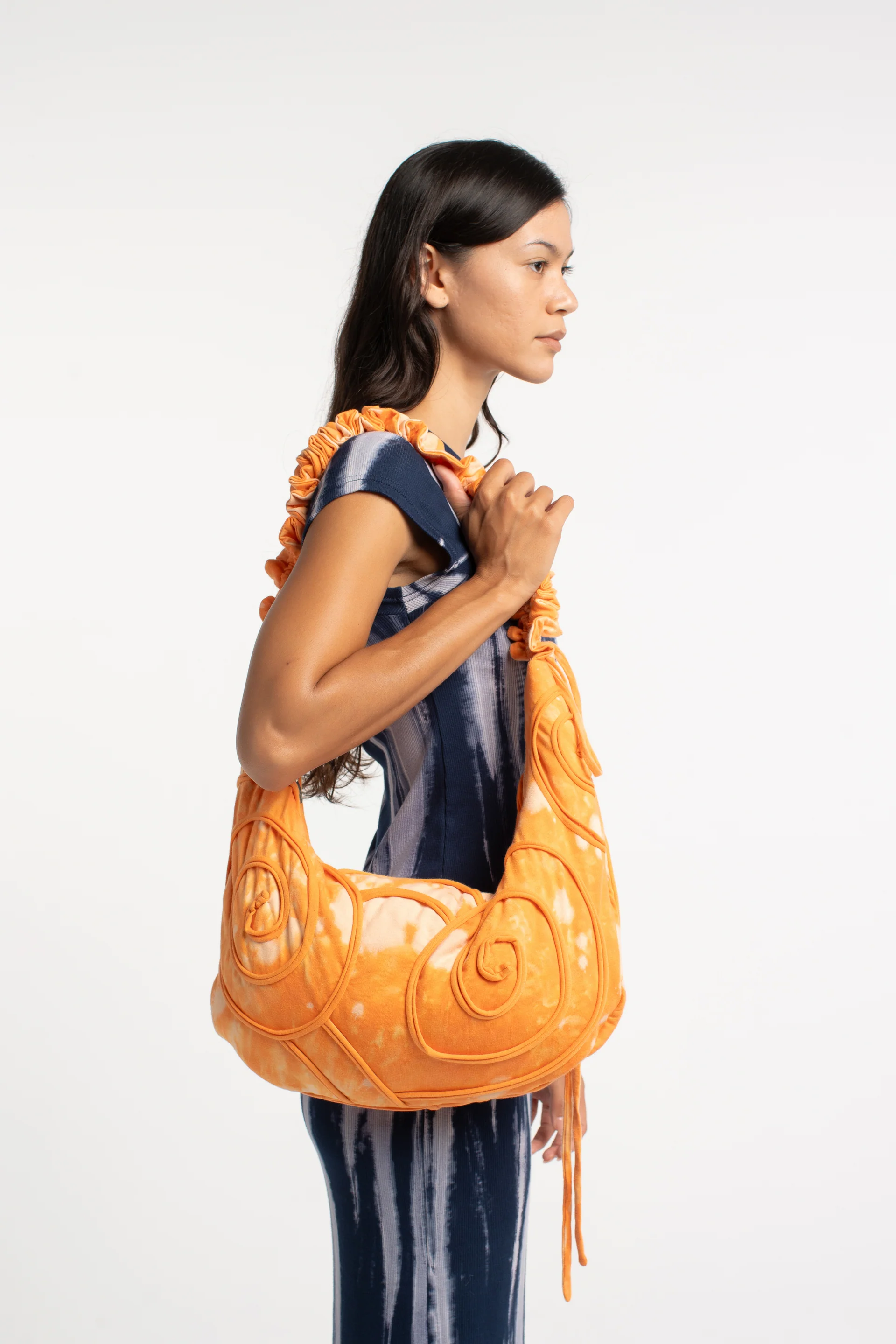Fresh Faces: Pindo Saraswati
Interview with Pindo Saraswati, one half of eco-conscious Indonesian brand Kallarona
F&M’s Fresh Faces is a series featuring young Southeast Asian fashion practitioners, where we speak with them about how they embarked on their careers and what propels them as creatives.
Campaign image from the (soul)nset collection. Image courtesy of Kallarona.
Pindo Saraswati is one half of Kallarona, alongside designer Mayang Idbariza. The duo created Kallarona as an homage to the abundance and beauty found in the beaches of Indonesia, their home country. Despite studying design and architecture, Saraswati decided that fashion was what she wanted to go into. “Ultimately,” says Saraswati, “I discovered that architecture and fashion share a common core”.
Pindo Saraswati and Mayang Idbariza, co-founders of Kallarona.
Saraswati met her business partner, Mayang Idbariza. Through a series of production meetings, Saraswati realised that they shared the same values and vision in creating eco-conscious garments. Excited, Saraswati proposed a business partnership that has made Kallarona a reality. As the designer and production manager, Idbariza has been working together with Saraswati since 2021 to produce vibrant, fun yet poetic collections that honour minimal-impact practices. Their latest collection, (soul)nset, is a series of garments made out of cotton gauze that explores the abstract shapes created by the movement of ocean waves.
Campaign image from the (soul)nset collection. Image courtesy of Kallarona
Could you describe the initial process of creating your brand, Kallarona? What was the story behind it?
It all started with my concern about the environmental impact of fast fashion. I enjoy travelling, especially in my home country, Indonesia, which has many beautiful beaches. It is unfortunate that some of the beaches I have visited are polluted with solid waste such as clothes that are non-biodegradable, and plastics. I have been to some beaches contaminated with liquid waste, including textile dyes dumped into rivers. Bearing this in mind, I decided to make each piece of clothing with minimal environmental impact, by using biodegradable and eco-friendly materials.
Kallarona uses cotton gauze as its main material, which is biodegradable and environmentally friendly. Despite its limitations, we continue to develop this material so that it is able to compete with other conventional materials on the market. Our packaging includes recycled paper, banana tree bark, and cassava bags. Its stand-out characteristic lies in the vibrant array of garments, coloured with hues derived from nature's own palette. I keep exploring natural dyes until I find several perfect colours.
The name Kallarona was inspired by the products that we create. "Kalla" means "beautiful girl" in Greek, and "rona" refers to "colours" in Indonesian. Kallarona represents a variety of beautiful colours for women's wear, while emphasising that appealing designs and colours don't have to have a negative impact on the environment.
“Kallarona uses cotton gauze as its main material, which is biodegradable and environmentally friendly. Despite its limitations, we continue to develop this material so that it is able to compete with other conventional materials on the market.”
Campaign image from the (soul)nset collection. Image courtesy of Kallarona.
Kalla Rona has a re-dye as well as a re-colour service. Can you talk more about your eco dye process and your efforts in creating garments that have a lower impact on the environment?
We offer the following services as part of our responsibility to enable customers to reuse their products with slight modifications to refresh the garment. The process involves natural dyes and there are three stages: the first stage is mordanting, which prepares the fabric to accept the dye. Subsequently, dyeing occurs, where natural dyes are extracted from plants by boiling them in water. Once the colour is extracted, it is filtered, and the extract is used. Finally, there is a fixing process, which aims to set the colour onto the fabric using tawas, tunjang, or kapur. The solid waste from natural dyeing is collected and provided to gardeners in our community for use as fertiliser. Additionally, we filter the wastewater before disposing of it into the environment.
Campaign image from the (soul)nset collection. Image courtesy of Kallarona.
Let’s talk more about your spring summer collection. What was the inspiration behind it? Are there any specific elements that you would want people to pay attention to, and why?
Our latest collection, titled (soul)nset, is inspired by the breathtaking sunset views at the beach. Given that our country is surrounded by the sea and there are numerous beaches, we wanted to invoke the beauty of these landscapes through this collection.
Behind-the-scenes of the (soul)nset collection. Video courtesy of Kallarona.
The dyeing process. Images courtesy of Kallarona.
Could you share more of the creative and technical process of creating a collection in general? What materials or techniques are your favourites to work with?
Cotton gauze serves as our main material due to its biodegradability, comfort, relative durability, and excellent sweat absorption properties. Additionally, we utilise other eco-friendly materials such as Tencel, cotton, and linen. Our products are handmade, and for our latest collection, we worked on a new draping technique that formed the basis of the garments.
As an emerging local designer, what are some of the key challenges you face and equally, opportunities that you seek?
The challenges we face include maintaining consistent product quality, constant development to improve further, and staying true to our vision and mission despite the influx of new brands with similar concepts.
What are your hopes for your local fashion scene, and in Southeast Asia as well?
We hope that future fashion brands will be more mindful of the impact generated during the production of each of their products.
Campaign image from the (soul)nset collection. Image courtesy of Kallarona.
Finally, what are your plans for your label moving forward?
Moving forward, Kallarona plans to establish a recycling initiative where customers can return their old or unused Kallarona products. These items will be recycled into new garments, and as an incentive, customers can receive a special discount for participating in this programme. Recognizing the ever evolving nature of fashion, we believe in the importance of repurposing old garments into something fresh rather than letting them languish in the closet.
Additionally, we aim to expand Kallarona's reach by forging partnerships with offline stores overseas, to increase our brand's visibility to a broader audience.
“Recognizing the ever evolving nature of fashion, we believe in the importance of repurposing old garments into something fresh rather than letting them languish in the closet.”
See more of Pindo’s work here and on Instagram at @kallarona_.

